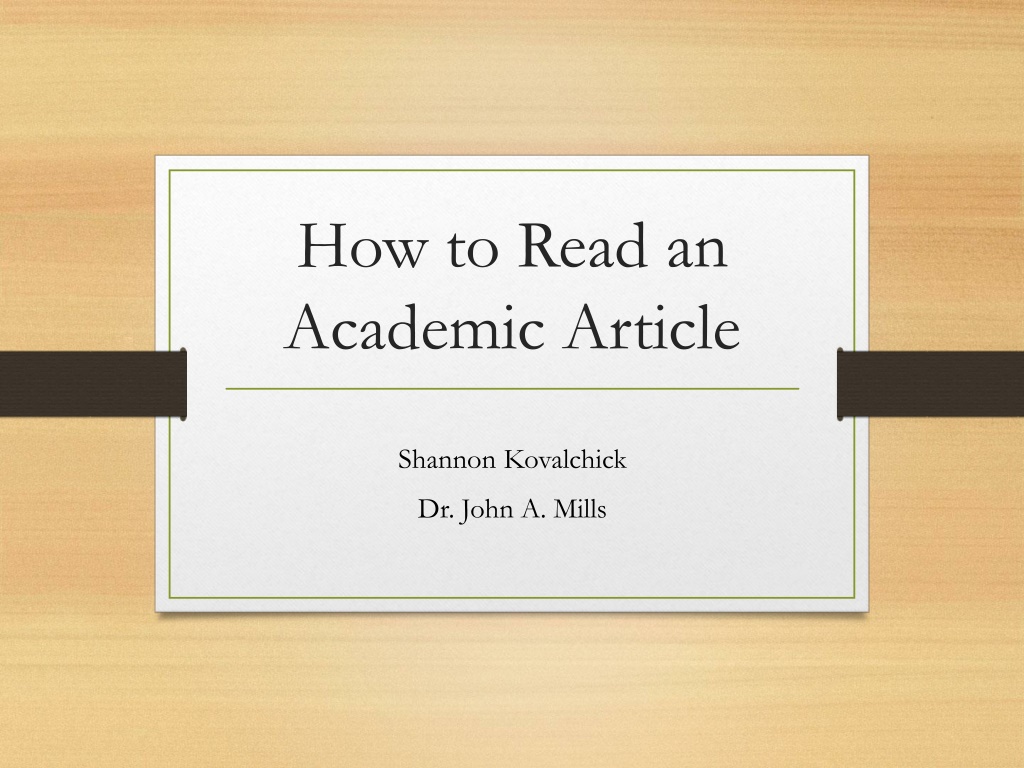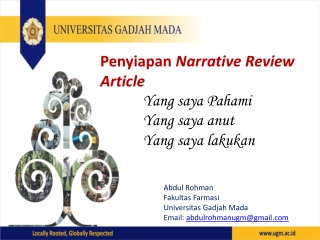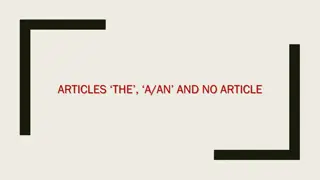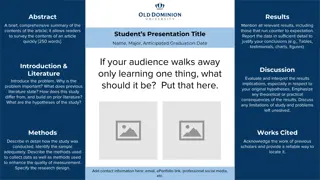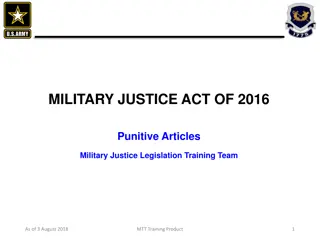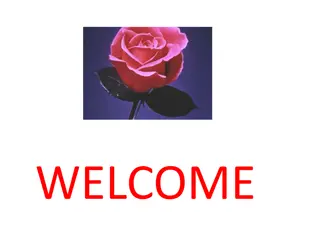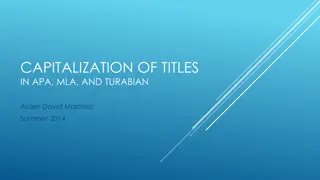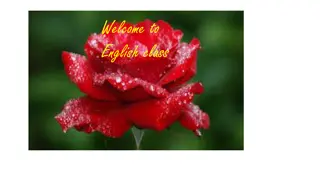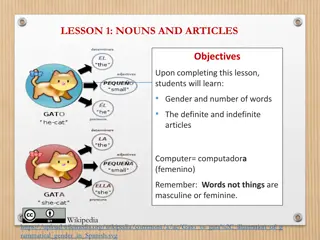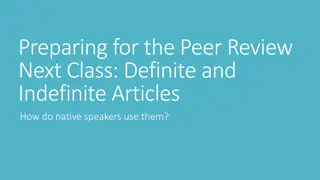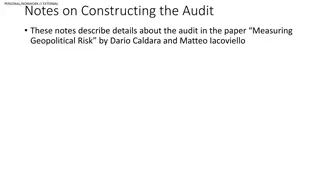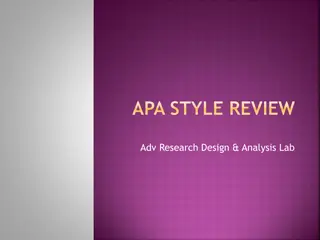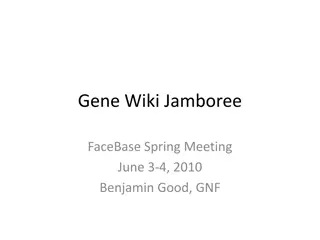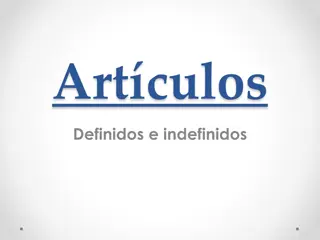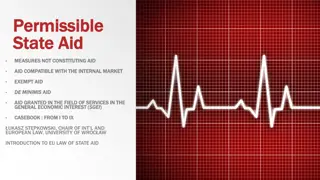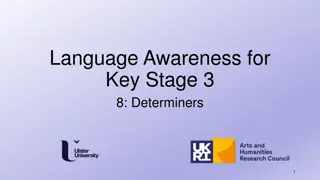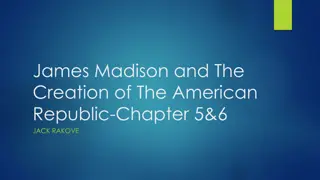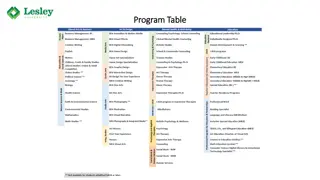Understanding Academic Articles: A Comprehensive Guide
Academic articles are published in journals through a peer-review process. Scholars write these articles to share ideas within their disciplines. To effectively read an academic article, focus on the title and abstract to determine relevance. Engagement with the content multiple times is necessary for a full understanding.
Download Presentation

Please find below an Image/Link to download the presentation.
The content on the website is provided AS IS for your information and personal use only. It may not be sold, licensed, or shared on other websites without obtaining consent from the author. Download presentation by click this link. If you encounter any issues during the download, it is possible that the publisher has removed the file from their server.
E N D
Presentation Transcript
How to Read an Academic Article Shannon Kovalchick Dr. John A. Mills
What is an academic journal? Academic journals are periodicals in which researchers publish articles on their work. Most often these articles discuss recent research. Journals also publish theoretical discussions and articles that critically review already published work. Academic journals are typically peer-reviewed journals. Some, but not all, search engines that search for periodical sources identify whether or not the sources are from peer-reviewed publications
What is the peer-review process? Getting published in peer-reviewed (also called refereed ) academic journals usually involves three or four steps. 1. Submit an article manuscript for consideration. 2. Journal editors will send the submission to other scholars who do similar work and who are qualified to review the article. Generally, editors will send submissions to be reviewed by three other scholars. 3. Editors will evaluate the reviews and decide whether to reject or accept the submission. Usually, the response is either a rejection or an acceptance contingent on the author making revisions. 4. If the author is asked to make revisions, they are to edit and resubmit the article for another round of reviews. Sometimes the article is accepted at this point and other times authors are asked to make further revisions.
What is the purpose of academic articles? Scholars write academic articles to share their ideas with their peers, usually within their own academic discipline (e.g., physics, literature, psychology). Articles fall under the realms of: research reports: presentation of an original study or studies literature review articles: discusses existing research about a problem and suggests paths for future studies theoretical articles: discusses existing theories that explain observation, and often proposes new theories or a new perspective on theories Because they already share a highly specialized background, they often assume that their readers already understand some of the fundamental knowledge of the field as well as the jargon. Jargon requires on-going attention.
Choosing an article When looking through journals, databases, etc. that show you dozens (or hundred) of articles, you need to narrow down your list to read. Read the title: titles typically reveal the main theory or variables being investigated in the article Read the abstract: the abstract will give you more information about the context of the theory and variable to see if it relates to your topic
Reading an academic article Different things require different reading (e.g. phone book, dictionary, novel, textbook); Academic articles cannot be read effectively in the same way as other things. The contents of an academic article cannot be grasped by a single reading. You have to engage with it several times, but in different ways. Step 1: Skim the whole article Step 2: Determine your purpose for reading the article Step 3: Read specific sections critically to fulfill your purpose
Step 1: Skimming the article Skim reading makes use of a normal convention for structuring writing: placing key information at the beginning of a chunk of text, then elaborating on that in the rest of that chunk Two types of chunks paragraphs and paper sections 1sttype of chunk: paragraphs. In non-fiction writing, it is most usual to put the key sentence of the paragraph at beginning, then elaborate on that key sentence. State, then elaborate, is the general rule. Because of that, we can usually obtain a good understanding of what an author is saying by reading only the first sentence of paragraphs. You may have to force yourself to stop reading after the first sentence, but if the section is relevant to your purpose you will come back to it. 2ndtype of chunk: sections. In research journals, the articles are broken down into sections, most often abstract, literature review, methods, results, and discussion. As with paragraphs, the general rule for sections is 'state then elaborate'. So, immediately after the section heading, the first paragraph will generally contain key information for that section.
Step 1: Skimming the article There are two sections that usually are particularly useful in understanding the article. the Introduction the Conclusion Here, an author will generally end the section with a paragraph that makes important points. Now we can modify the previous rule: So, read fully the first and last paragraph of the Introduction and the Conclusion sections
Step 1: Skimming the article: Review the figures and tables As you skim read through the article, you will have noticed that the text is interrupted by a set of diagrams. Diagrams, or figures, are usually intended to display an idea in a way that is easier to see and grasp than is possible with text. While skimming, look over any tables you encounter to see what kind of information they are displaying. If the information is relevant to your purpose, you can look at it more closely later.
Step 1: Skimming the article Combining the skimming strategies for the two types of chunks , in each section you will read the entire first paragraph, then the first sentence in each paragraph after that. For the introduction and conclusion, also read the entire last paragraph. Read the topics of all tables and charts.
Step 2: Determining purpose Different purposes for reading articles require attention to different areas. Overview of topic Focus on the introduction and conclusion. Research ideas Read the introduction and conclusion, looking for further research suggestions in conclusion, then critically read the methods section. Planning an experiment Critically read the methods section. General knowledge Carefully read the whole article making sure you understand it all. Assignment for a course Think about the goal of the assignment. Critically read what you might use to achieve that goal.
Step 3: Reading critically: Skill Treat critical reading as a skill to develop personal & academic responses. It can be developed through practices, such as: Marking and looking up all vocabulary and concepts that your are unfamiliar with Taking notes of the text's main ideas and adding your own responsive comments Talking to others about what you have read Relating a given text to others in the syllabus by identifying similar or contrasting themes Explaining what the text means to a non-specialist and noting what you would have to add to make it intelligible (This will help you to see the underlying, unstated assumptions.) Asking yourself: How can I convince my peers/teachers that I understand what this is about?
Step 3: Reading critically: Attitude Treat critical reading as an attitude towards the communication of ideas. Think of reading an article like hearing someone else s perspective on a specific topic. Remain open minded to the fact that your previously held ideas may be wrong. Do not make the mistake of thinking that authors are always right. Keep in mind that writers of academic articles are trying persuade you to agree with their ideas. Keep in mind the influence both the author s ideological affiliations and biases in writing the article as well as your own in reading the article. Remain willing to look up vocabulary and concepts in the article that you are unfamiliar with to expand your knowledge and fully understand the article.
Step 3: Reading critically: Questions while reading think about the following questions to help you read critically: What is the author s purpose for writing this paper/ conducting this research? What are the main points of this text? Can you put them in your own words? What sorts of examples are used? Are they useful? Can you think of others? What factors (ideas, people, things) have been included? Can you think of anything that has been missed out? Is a particular bias or framework apparent? Can you tell what 'school of thought' the author belongs to? Can you work out the steps of the argument being presented? Do all the steps follow logically? Could a different conclusion be drawn from the argument being presented? Are the main ideas in the text supported by reliable evidence (well researched, non-emotive, logical)? Do you agree or disagree with the author? Why? What connections do you see between this and other texts? Where does it differ from other texts on the same subject? What are the wider implications for you, for the discipline?
Assess the strength/validity of the argument While continuing to close read for the subtle rhetorical ways in which the writer builds his or her case, use the following questions to help you sort out the building blocks of the writer's argument: 1. Evidence What evidence does the author offer in support of the position put forth? (Identify all pieces of evidence you find.) What is the nature of each piece of supporting evidence? For example, is it based on empirical research, ethical consideration, common knowledge, anecdote? How convincing is the evidence? For example, does the research design adequately address the question posed (#1 above)? Are the ethical considerations adequately explored and assessed? Have you read or heard anything on this subject that confirms or challenges the evidence? 2. Counter arguments What arguments made in opposition to the author's views were described? Were these arguments persuasively refuted? What evidence was used in the refutation? 3. Effectiveness What were the strengths of the article? Was it difficult to read and understand? If so, why? If not, why not? Were you able to follow the moves of the article from thesis to evidence, for example? Did the structure of sentences and paragraphs and the overall organization guide you and help you follow the author's intent? Did all the material seem relevant to the points made?
What to look for in each section By knowing the point of each section, you'll find what you need quickly and without being bogged down by the convoluted language in these academic journal articles. Academic articles, particularly research reports, generally contain the following: abstract introduction literature review methods data results conclusion bibliography
Abstract This is the summary of the journal article. Almost all journal articles have an abstract. The abstract appears as a short paragraph at the start of the article, sometimes italicized or indented to set itself apart from the rest of the article. Editors/publishers usually have rules about the structure What's important: The abstract tells you the point of the article. Always read the abstract to make sure the article is suited toward your paper's topic.
Introduction / Literature Review The writer's introduction is the first section of the paper. Although not always labeled, it generally introduces the topic, the thesis, and tells readers why the research is important. What's important: Look for the thesis; what's the author trying to prove or show? How do they intend to contribute to their field? Read the first and last paragraph of the introduction; the thesis is oftentimes located there. If you cannot find the thesis in those two places, you may have to scan the whole introduction. Literature Review (or "A Review of the Literature") A literature review looks at past research on the author's thesis. The literature review demonstrates to other researchers that the author is thoroughly acquainted with their topic. It is not always marked as a separate section from the introduction. What's important: If you're still searching for sources for your paper, a literature review can point you to other sources you can use. It can also broadly educate you on this area of research. If you're not looking for more research and you have a good grasp on the material, feel free to skip over this section. Questions: What is the overall purpose of the research? How does the research fit into the context of its field? Is it, for example, attempting to settle a controversy? show the validity of a new technique? open up a new field of inquiry? Do you agree with the author's rationale for studying the question in this way?
Methods In this section, the author details how they will try to support (or disprove) their thesis. What's important: You should know how the writer obtained their information and explain that in your paper. Did they use a survey? What type of survey? Who did they survey? Or did they do an experiment? What type of experiment? How did they get test subjects? Questions: (If an experiment:) How did the researchers manipulate variables in order to test them? Were the measurements appropriate for the questions the researcher was approaching? Often, researchers need to use "indicators" because they cannot measure something directly--for example, using babies' birthweight to indicate nutritional status. Were the measures in this research clearly related to the variables in which the researchers (or you) were interested? If human subjects were studied, do they fairly represent the populations under study? Were the measurements appropriate for the questions the researcher was approaching? Often, researchers need to use "indicators" because they cannot measure something directly--for example, using babies' birthweight to indicate nutritional status. Were the measures in this research clearly related to the variables in which the researchers (or you) were interested?
Data All the data the author collected from their research is located in this section. This is often incorporated in the results section. What's important: Although it depends on your purpose for reading the article, looking at the data in combination with the results gives you a more unbiased result of their experiment. Sometimes, you'll want to skip this section entirely. If you're interested in a specific point of the author's research (and which is unlikely to be covered by the author in the conclusion) or are interested in replicating the research, then you may want to check out the data section.
Results The author explains the results of the data. What's important: Like the data section, this section can be skipped over depending on your interests. The conclusion's section should be the final is-my-thesis-right-or-wrong statement, and the conclusion is usually clearer than the results section. If the article's conclusion doesn't satisfy you, then you may want to look at the results section. Questions What is the one major finding? Were enough of the data presented so that you feel you can judge for yourself how the experiment turned out? Did you see patterns or trends in the data that the author did not mention? Were there problems that were not addressed?
Conclusion / Discussion The author's summary of the journal article. The author will also explain whether his or her thesis is correct, the implications, and what other research can be done. What's important: This section is vital. If you use this article as a source, you better know the general outcome of the author's research. It is a good idea to read this section after you read the abstract, then again after reading the rest of the article. Was it proven wrong? Right? Inconclusive? You can always turn to the results section if you can't find the answers you're looking for here. You may also find a suggestion for future research in the discussion of limitation that guides your own project. Questions: Do you agree with the conclusions drawn from the data? Are these conclusions over-generalized or appropriately careful? Are there other factors that could have influenced, or accounted for, the results? What further experiments would you think of to continue the research or to answer remaining questions?
Bibliography/Works Cited/References The bibliography is the list of sources the author has used. What's important: If you're in need of more sources, take a glance through the titles of this section. You may find articles you can use in your paper. What is the journal from which the article is taken?
Final Advice If you are reading articles for a research project, find a method of organizing your research that works for you. One way is to sort them by your purpose for reading. If you plan on using the information in any paper in any way, make sure your know proper APA citation (or other citation styles you are using) and gather all of the information from the article you need to do a full citation before letting it leave your possession, and if possible make note of how you can easily access the article again (what database you used, if it is in the library, if a professor owns a copy, etc.). Keep reading articles. The more articles you read, the easier it is to get useful information from them, and they become less of a chore to read.
